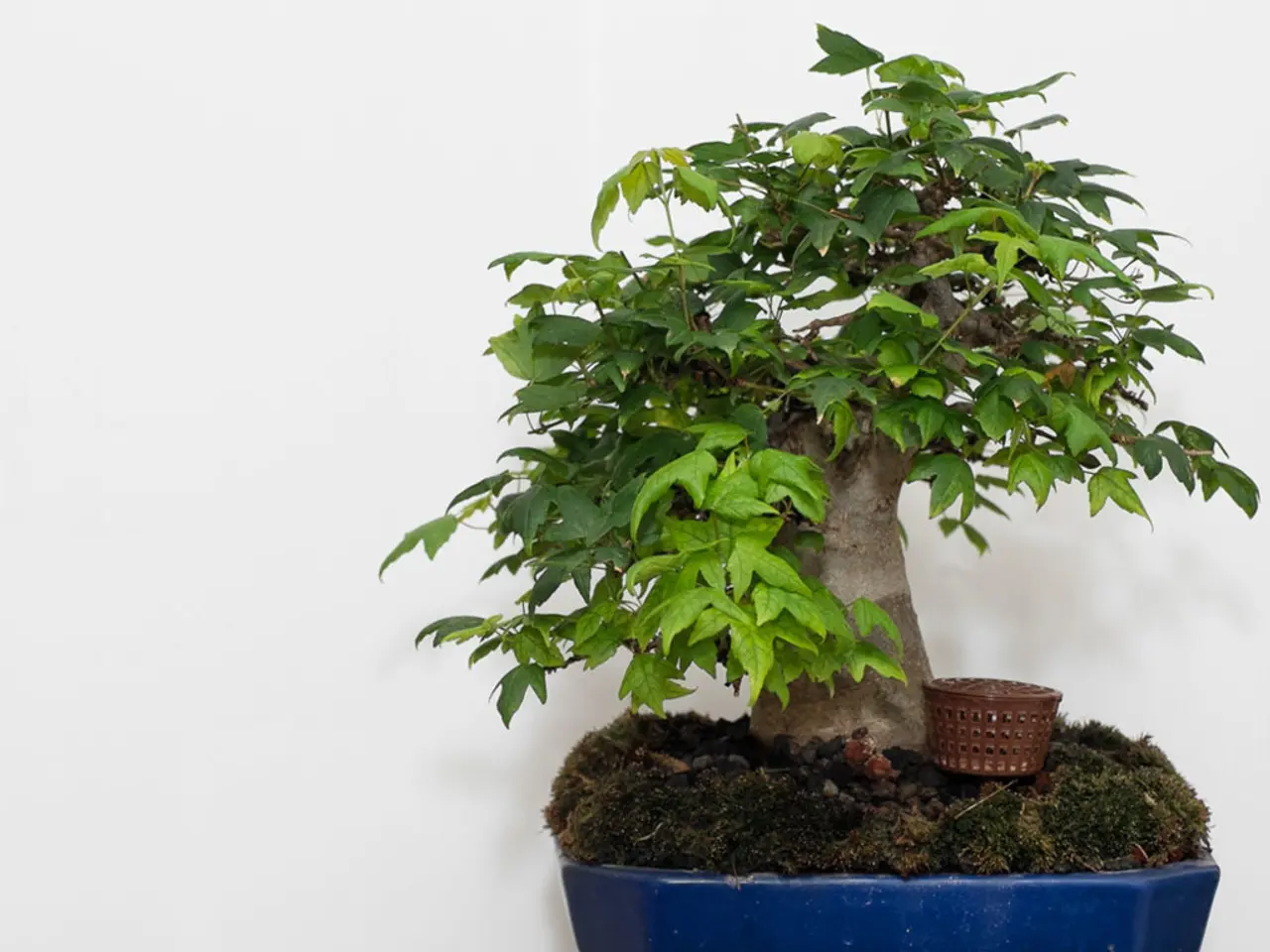Sustainable Bonsai Maintenance: Adopting Earth-Friendly Habits & Ecological Decisions
Cultivating a Greener Future with Eco-Friendly Bonsai Care
Bonsai, the ancient art of growing miniature trees in containers, is not just a hobby but a declaration of environmental stewardship. By embracing repurposed materials, water-conserving techniques, and natural fertilizers, sustainable Bonsai cultivation plays a crucial role in promoting a greener future.
This eco-friendly approach supports a sustainable and environmentally conscious lifestyle in several ways. Resource-efficient gardening, enhanced air quality, mindful consumption, and a deeper connection with nature are all benefits of adopting these practices.
Water Efficiency
Water conservation is at the heart of Bonsai care. Careful watering, only when the topsoil is dry, and ensuring proper drainage to avoid waste and root rot, makes Bonsai a more water-efficient choice compared to conventional gardening.
Natural Soil and Balanced Fertilizers
Choosing appropriate soil and using fertilizers responsibly is another key aspect. This reduces chemical runoff, supports soil health, and minimizes environmental harm.
Smart Placement and Seasonal Care
Positioning Bonsai trees thoughtfully optimizes sunlight and temperature needs, reducing the reliance on artificial aids and excess energy use.
Mindfulness and Long-Term Commitment
Caring for Bonsai cultivates patience, attention, and respect for living things, encouraging sustainable habits beyond Bonsai itself.
Promoting Greenery in Small Spaces
Bonsai can fit urban and indoor environments, increasing green cover and improving indoor air quality without requiring large land use.
Inspiration for Broader Ecological Awareness
The careful stewardship of Bonsai art often connects practitioners with broader environmental issues, motivating sustainable living and participation in initiatives like reforestation.
Pruning and Fertilizing
Pruning frequency for Bonsai trees depends on species, growth rate, and desired shape, with a general rule of every 4-6 weeks during the growing season. Incorporating natural fertilizers like compost tea or worm castings enriches the soil while reducing reliance on synthetic chemicals.
Light Requirements and Mulch
Some Bonsai species can tolerate low natural light conditions, such as Chinese Elm, Ficus, or Serissa. Using recycled paper or cardboard as mulch for Bonsai can be eco-friendly, but be cautious of potential harm to the tree due to acidity and decomposition.
Extreme Weather Conditions
During extreme weather conditions, bringing Bonsai trees indoors can protect them from damage.
Resilient Species
Some Bonsai species, such as Juniper and Chinese Elm, are naturally more resilient and require minimal maintenance to thrive.
Sustainable Watering Techniques
Sustainable Bonsai watering techniques include the 'water-drop' method to avoid overwatering.
Sustainable Maintenance
Sustainable Bonsai maintenance involves adopting a nuanced understanding of a tree's specific needs to promote healthy growth while minimizing environmental impact.
Together, these eco-conscious Bonsai practices contribute to preserving natural resources, enhancing local environments, and nurturing pro-environmental attitudes integral to a sustainable lifestyle.
- By implementing sustainable watering techniques, such as the 'water-drop' method, Bonsai care reduces water consumption, making it a more eco-friendly choice for home-and-garden and landscape design.
- Adopting sustainable Bonsai maintenance, which includes using natural fertilizers and pruning appropriately, contributes to a sustainable lifestyle by reducing chemical pollution and promoting a healthier environment and connection with nature in the realm of environmental-science.




